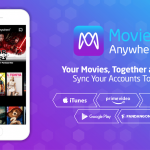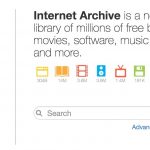tons of Of native movie Theaters Will soon turn out to be Beacon sizzling Spots
Beacon network Mobiquity and theater advertiser Screenvision staff as much as convey mobile advertising to U.S. moviegoers.
the days are lengthy long past when the only things you noticed at a movie theater have been the movie, and previews for films.
at the present time, it’s no longer distinct to look at as much as half an hour of on-display advertisements sooner than the film previews start. Oh, yes, and there’s also a film.
those pure film-only days have become additional away, with the joint announcement these days with the aid of Mobiquity Networks and Screenvision that they’ll set up and take care of iBeacons all through 300 multiplexes within the U.S. to create the most important movie show-based cell ad network.
Mobiquity runs what it describes as the largest network in the U.S. of retail mall-primarily based beacons for cellular advertisements — nearly 500 purchasing department stores — and Screenvision has a cinema promotion community overlaying virtually 2300 movie theater complexes within the U.S., representing 14,200 monitors. Discussions are now underway with entrepreneurs about particular advert/advertising campaigns.
the businesses mentioned the beacons will likely be put in over the subsequent 60 days. whereas there were some experiments with beacons in movie theaters, Mobiquity Chief advertising Officer Jim Meckley informed me that “no person has taken it to the extent of a network of beacons [with] mobile apps in theaters.”
Beacons shall be used, as a substitute of GPS-based vicinity marketing, so that cell marketers can determine precisely where the moviegoer is, inside the advanced.
Beacons appoint low-energy Bluetooth transmissions to emit a vicinity id to a listening cell app, which then communicates the location via cellular information or WiFi to the marketer’s server, and receives again place-particular advertising. since the beacon has a specific region, the location can also be very specific inside of a big building, as opposed to, say, geo-fencing that simply locates a facility.
iBeacons cannot be monitored remotely with out modification, but Screenvision Chief advertising Officer John McCauley said theater personnel will keep an eye on them.
the customer must have a supported app put in, reminiscent of two film-related ones, MovieTickets or Dealflicks. Meckley stated that some retail shopping apps used in the Mobiquity networks, like Shopular, may also work. The apps don’t need to be open to receive the beacon’s place or to receive and show push notifications, as long as the person has opted-in.
A moviegoer who simply left a screening might obtain additional advertising and marketing in relation to the film they’ve just considered, comparable to a chit for a celeb Wars masks. Or they may get a discount for an advert they noticed past in the theater. If they’re the usage of the MovieTickets or Dealflicks app, they usually bought their tickets through that provider, they might receive an ad or coupon associated to the movie as they’re ready in line to see it.
any other risk: they may well be pinged with a discount for a bargain on a big popcorn as they walk with the aid of the concession stand. the companies stated the person engagement information will be shared with the theaters.
At this level, you might be shuddering — as i’m — at the thought that moviegoers can be receiving commercials or coupons while they’re in the theater, and perhaps even all over the movie.
As anyone who once ran a film theater (heart display in Cambridge, Mass.), there are few issues I’d much less relatively do than spend $12 or extra per ticket, watch twenty minutes or extra of commercials before the previews and the express, and then share my consideration on the big movie monitor with the flickering mild of smartphones round me.
“At this point,” Meckley told me, the cell advertising and marketing might not be delivered “whereas persons are of their seats.” He added that he doesn’t “envision that, however that doesn’t mean it couldn’t happen,” if entrepreneurs can find a way to give a boost to the display experience.
As any individual who has additionally been all for interactive media for a number of many years, the fact that many film theaters make the most of digital video projection nowadays raises the interesting chance that there can be interplay between your smart phone and what’s on the reveal. Meckley suggested there may well be interactive quizzes speaking with what’s on the monitor, or balloting on various endings.
“satisfaction And shock”
That sounds … attention-grabbing. once in a protracted while.
however no longer for the regular movie show expertise. It wouldn’t take so much to become movie watching into something extra like looking at commercial tv, apart from with an even bigger monitor, a popcorn stand, a smattering of small lighted monitors and interacting customers, and dear tickets.
both executives guaranteed me that cellular marketing to film theaters will probably be achieved moderately, after “a fair bit of learning” about what keeps or enhances the customer experience.
“We’re not communicating that we’ve figured it out,” Screenvision’s McCauley mentioned, including that it was vital to accurately “cinematize the opportunity.”
however there may be additionally currently no mechanism in place — field surveys, for example, or centered very best practices — to determine if the user experience has been properly “cinematized,” beyond the engagement knowledge that’s back from the mobile apps.
And that received’t tell marketers if they’ve simply ruined your night time at the motion pictures.
“we now have a mandate from our property homeowners to give protection to the shopper experience,” Meckley stated. Any cell advertising and marketing to moviegoers of their seats, he added, should “satisfaction and surprise.”
I just hope we haven’t considered this film earlier than.
(Some pictures used under license from Shutterstock.com.)
advertising Land – web advertising information, strategies & guidelines
(17)
















